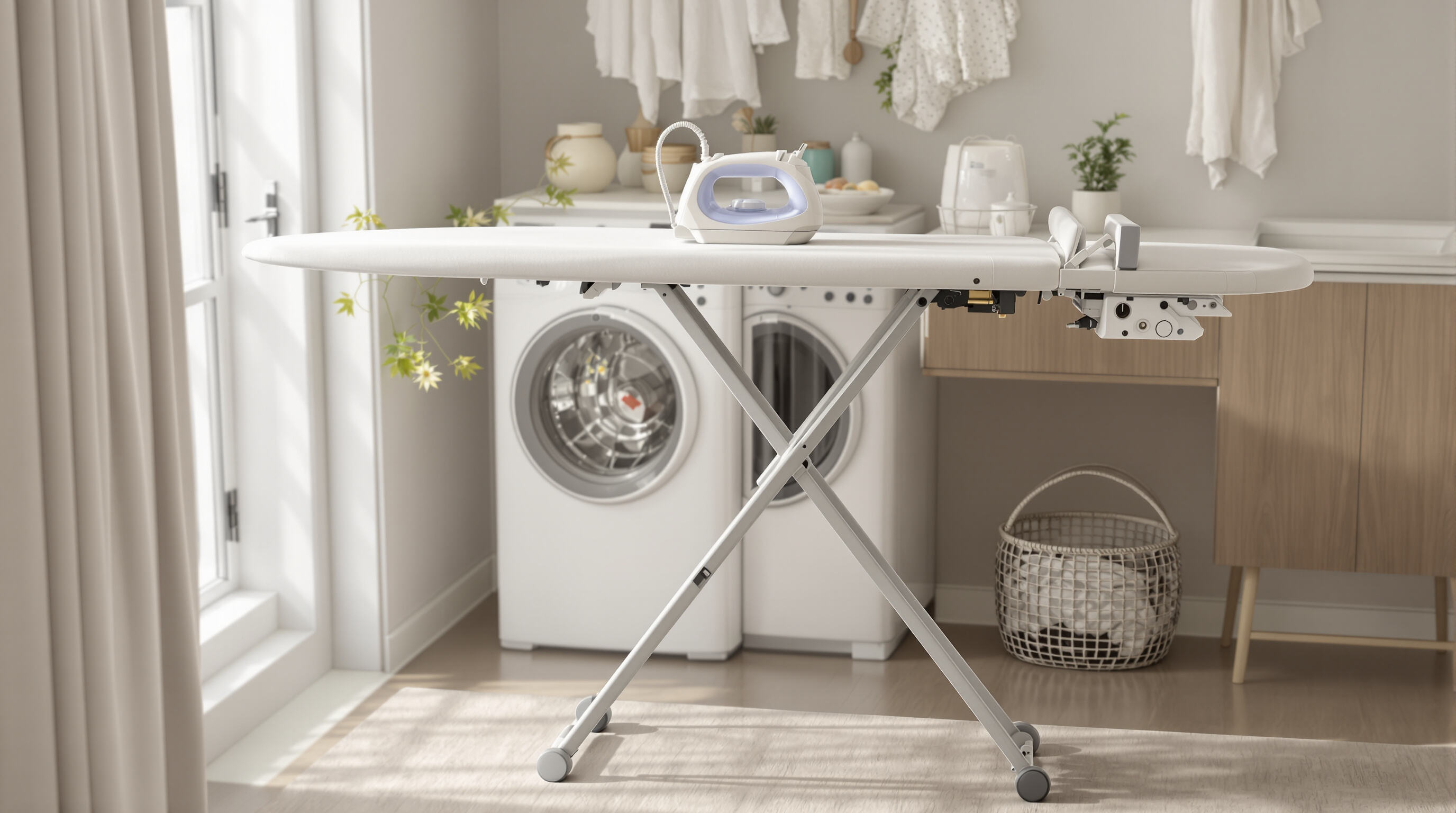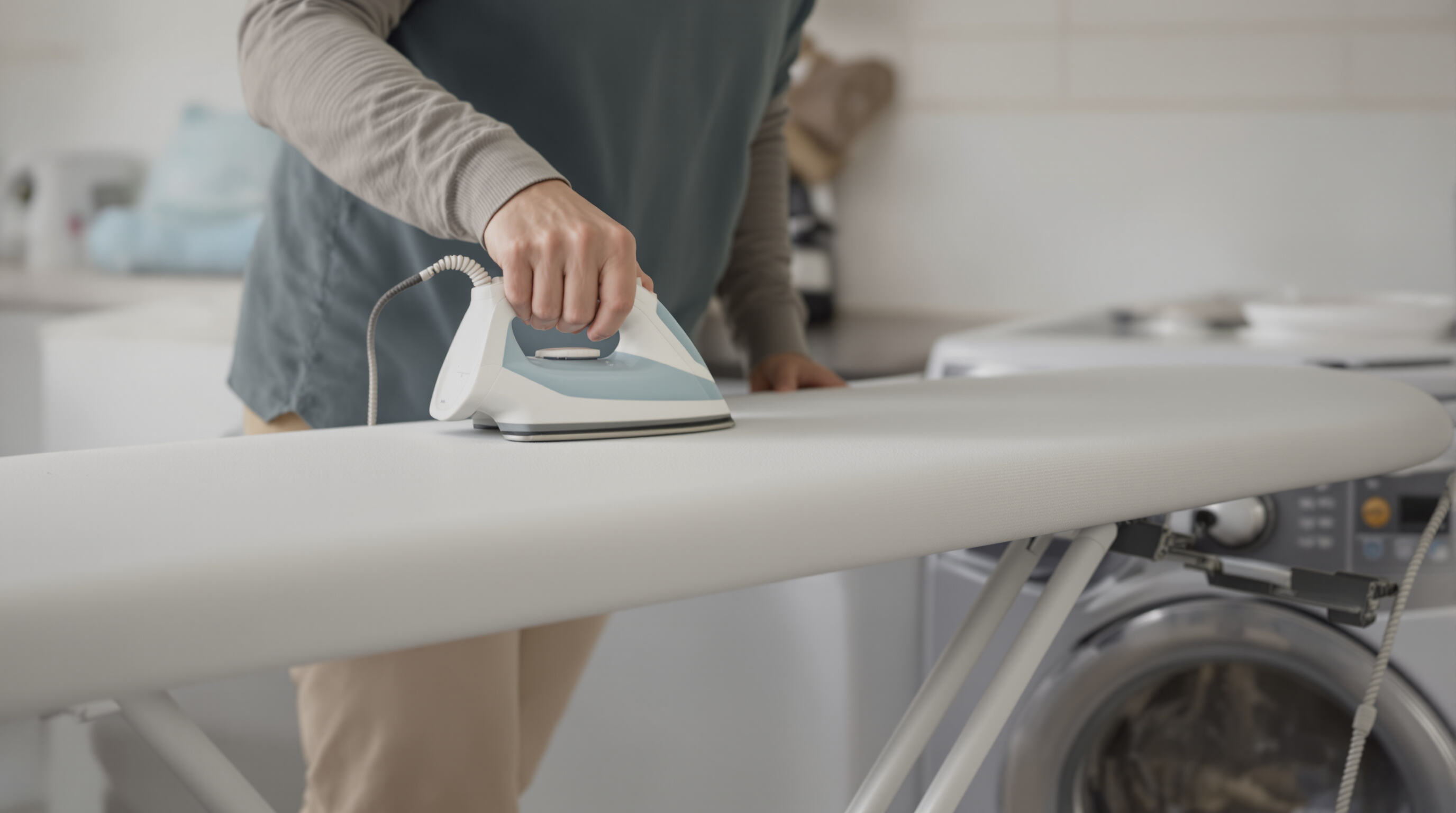Modern households require ironing boards that adapt to their unique spatial constraints and lifestyle demands. Choosing the right design ensures efficient workflow while maintaining harmony with your living environment.
Ironing boards that stand alone are great for people who need something versatile in their living space. They come with adjustable height settings and folding frames that fit into all sorts of odd corners or awkward room configurations. Wall mounted versions take up way less floor space though, especially helpful in tiny apartments where every inch counts. These can be pulled out when needed then tucked back away against the wall completely out of sight. According to recent research from last year's home organization trends report, around two thirds of folks living in compact dwellings actually prefer having their ironing station attached to the wall rather than taking up valuable real estate on the floor for their laundry nooks measuring less than fifty square feet total area.
Tabletop ironing boards provide portable solutions for dorm rooms or RVs, while built-in designs integrate with cabinetry in modern kitchens or closets. Leading manufacturers now offer tapered 18"x54" boards that nestle between appliances and sliding door tracks without sacrificing ironing surface area.
Busy families often benefit from heavy-duty freestanding boards with wide surfaces for batch ironing, whereas single professionals may prefer quick-deploy tabletop models. Retirees increasingly opt for height-adjustable units (28"-40" range) that accommodate both seated and standing postures.
New York City property managers report a 40% increase in wall-mounted ironing board installations since 2021, particularly in micro-apartments under 400 sq. ft. These systems reduce floor clutter while providing full-size ironing surfaces—critical when 72% of urban residents iron at least twice weekly according to laundry habit studies.

Today's ironing boards are all about getting the job done without hurting your back or burning something important. Most good ones these days can be adjusted anywhere from around 30 inches up to 40 inches tall, which means people who stand at the board won't strain their shoulders as much, and those who prefer sitting down won't twist their wrists trying to reach high. The bases tend to have extra strong legs that stop them from shaking around when pressing clothes, plus wheels that actually stay locked in place so moving the board from bedroom to laundry room isn't such a hassle. Many also come with built-in spots for resting hot irons safely after use. These areas usually have special coatings that resist heat marks, keeping countertops looking nice even if someone accidentally leaves an iron sitting there too long.
Ironing boards made from steel frames and reinforced with cross bracing can hold around 45 pounds before they start to bend, which makes these great choices when dealing with thick materials such as jeans or heavy drapes. The aluminum versions work better in damp spaces because they won't rust away in the humidity of a busy laundry room, though their maximum load is lower at about 35 pounds. When someone distributes weight evenly on the surface area, it helps avoid those annoying sags that develop over time. Some higher end boards come equipped with three layers of cushioning material that keeps things nice and flat even after hundreds upon hundreds of ironing jobs.
35% of 2023 ironing board purchases included storage solutions like retractable hanger racks or mesh compartments for spray bottles, according to Home Organization Trends data. Wall-mounted stations now incorporate fold-down ironing surfaces with built-in fabric trays, optimizing vertical space in apartments under 800 sq ft.

Fixed-height ironing boards force users into compromised positions—standing users hunch over standard boards, while seated individuals strain to reach surfaces. Adjustable models solve both issues by aligning the workspace to natural elbow height (90° arm angle). This flexibility reduces shoulder fatigue by 22% during 30-minute sessions, according to ergonomic studies.
Optimal height customization prevents repetitive stress injuries by maintaining neutral spinal alignment. Users gain two critical advantages:
A 2023 survey by Consumer Reports found 68% of users experienced reduced back strain after switching to height-adjustable boards, with 54% reporting fewer tension headaches.
To determine your ideal ironing board height:
This method accommodates 95% of adult statures (5'0" to 6'4") and works seamlessly with most steam irons.
Most standard ironing boards come around 15 inches wide and about 54 inches long, though there are definitely some smaller options out there. Some compact versions can be as narrow as 12 inches, which makes them ideal for folks living in tiny apartments where every inch counts. If saving space is important, then folding models really help cut down on how much room they take up when not in use, maybe even reducing vertical space needs by something like 30%. When choosing between different sizes, think about how big your available space actually is. The wider boards that measure between 18 to 20 inches across are great for getting through all those sheets and comforters, but honestly, they need quite a bit of floor real estate too, probably around six to eight square feet. On the flip side, narrower boards still get the job done just fine for regular clothes like shirts and blouses, especially if someone's dealing with limited laundry space at home.
Steam iron boards need good quality covers made from tightly woven fabric that can handle temperatures above 400 degrees Fahrenheit. The surface should also have plenty of small holes, maybe around 500 or so, to spread the steam out evenly across whatever is being ironed. When dealing with steam generators specifically, look for models with stainless steel frames since they don't rust over time. Silicone coating on the cover helps keep water from collecting in spots. Mesh fabrics aren't great for this job though. They tend to catch on delicate fabrics and actually make things harder to glide over, cutting down efficiency somewhere between 15 to 20 percent when compared with regular cotton that's been woven tightly together.
Getting good results when ironing starts with picking the right cover that handles heat well but also lasts through multiple uses. Most people still go for cotton because it lets air flow through and doesn't get too hot easily. Mesh fabric covers are becoming more common too since they help clothes dry quicker by letting more air circulate around them. There's been a rise in popularity for covers with silicone coating lately. These tend to prevent scratches on delicate fabrics and let the iron slide over surfaces much better than regular ones. Some research indicates these silicone covers cut down on fabric sticking problems about 30 percent compared to older materials, though actual results can vary depending on what kind of fabrics someone typically irons at home.
A 0.5"-0.75" dense foam pad optimizes heat retention, enabling quicker wrinkle removal. Thinner padding requires 15% more iron passes according to textile care tests, increasing energy use. High-resilience foams maintain shape through 3,000+ iron cycles, preventing surface depressions that compromise results.
Innovative thermoplastic polyurethane (TPU) covers automatically seal minor cuts from steam iron spikes. Laboratory abrasion tests demonstrate TPU covers withstand 4.7x more punctures than standard vinyl before replacement, aligning with manufacturers’ extended warranty offerings for these premium products.
Snug-fitting covers with elasticized edges eliminate air pockets that cause fabric drag. Precision-cut designs reduce edge bunching by 90%, ensuring smooth transitions during collar and sleeve ironing. Non-slip rubberized grips on modern covers prevent positional shifts, particularly crucial when using heavy steam generators.
Ironing boards come in various types, including freestanding, wall-mounted, tabletop, and built-in models. Each type has its unique benefits, such as space-saving design for wall-mounted boards and portability for tabletop versions.
Adjustable ironing board height allows users to iron in a comfortable posture, reducing strain on the shoulders and back. It's important for both standing and seated ironing postures.
A thick padding enhances heat retention and allows for efficient wrinkle removal, reducing the number of ironing passes required.
Silicone-coated covers improve heat resistance and reduce fabric sticking problems, allowing for smoother ironing sessions.
Yes, wall-mounted ironing boards are particularly beneficial for small spaces as they save floor space and can be easily stowed away when not in use.
 Hot News
Hot News2025-10-13
2025-08-27
2025-08-12
2025-07-29
2025-07-16
2025-06-10